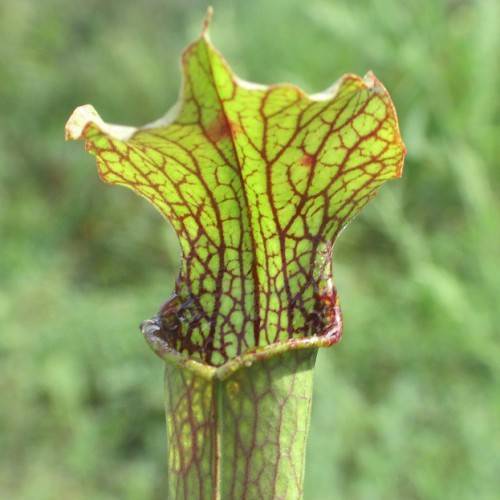
sweet pitcher plant
Sarracenia rubra
Cycle:
Herbaceous Perennial
Watering:
Frequent
Hardiness Zone:
6 - 8
Flowers:
Flowers
Sun:
Full sun
Leaf:
Yes
Growth Rate:
Low
Maintenance:
High
Drought Tolerant:
Yes
Care Level:
Medium
watering
Sweet pitcher plants (Sarracenia rubra) should be watered only when the soil is dry, ideally twice weekly. Generally, water should be applied until it begins to trickle from the drainage holes of the container. Avoid excessive watering because this species likes to grow in a very moist but well-draining potting mix. During periods of extreme summer heat and/or prolonged drought, water more frequently to prevent the soil from drying out completely. In winter, water less frequently — about once every 2 weeks — to allow the plant to go dormant. Whenever possible, use dechlorinated or rainwater. When in doubt, it is best to wait before watering; plants develop a better root system when grown in soil that dries out between waterings.
sunlight
Sweet pitcher plants, also known as (Sarracenia rubra) prefer bright, indirect sunlight for much of the day. If grown outdoors, they should get at least 6 hours of sun a day. If grown indoors, the plants should be placed in a south-facing window, which will provide bright, indirect light for 12-15 hours a day. During summer months, sweet pitcher plants may require more shade, to avoid getting sunburned. Additionally, in winter, the plants should receive additional light if possible, such as through artificial lighting such as grow lights, to provide enough light for them to flourish.
pruning
Pruning of sweet pitcher plants should generally occur in the late spring or early summer shortly after new growth appears. Pruning should take place by removing dead or overly long leaves. This helps to encourage new growth and prevents overcrowding of the plant. It is important to note that pruning should only be done on healthy pitcher plants. Do not remove more than 25% of the plant during any 1 pruning session. Additionally, handle the plant with care to avoid causing unnecessary damage.
